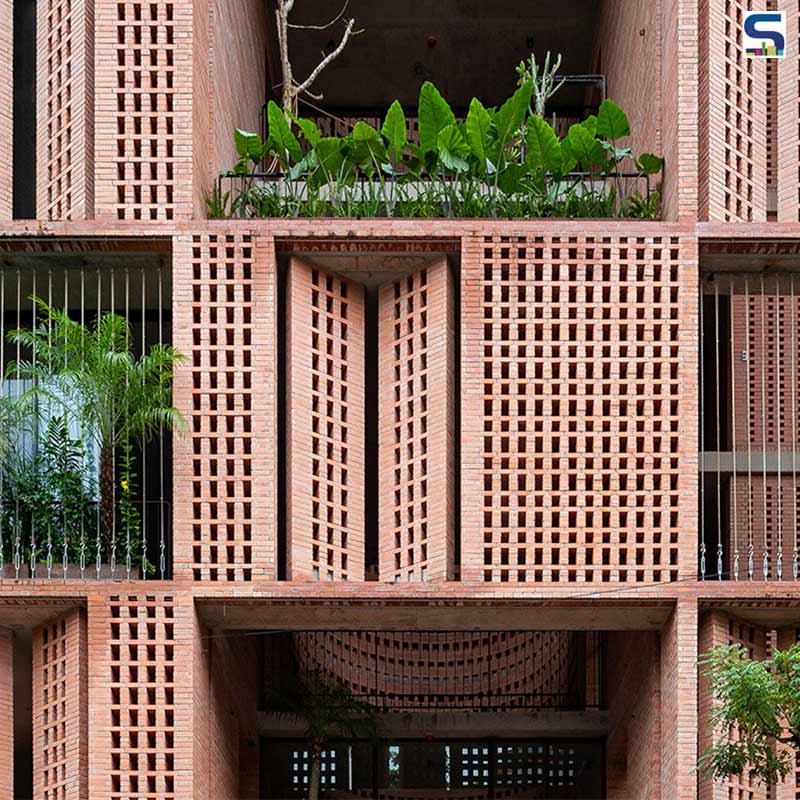
air brick in brick wall for ventilation Stock Photo Alamy
brick vents are ideal for crawl space, between floor, or bath exhaust. Model FL has a mounting flange for easy installation. These sturdy vents make an attractive accent through brick or block walls, but are equally useful through any wall type. Standard 0.125" material thickness in clear anodized aluminum. Brick vents are handy louvers for use.

New Performing Modern Exposed Brick Wall Made with Blocks with Surface Layer Called Ventilated
Brick veneer walls had lower ventilation rates than vinyl siding walls. Solar-driven vapor diffusion can act to redistribute vapor from within the wall to the interior, where it can condense and in some cases, cause damage. Cladding ventilation reduces the magnitude of this flow as this vapor is directly removed to the exterior. . .

Manthorpe Brown G930 Interlocking Air Brick Vents Homesmart
1. Introduction A ventilated wall assembly consists of three main layers: a wall core adjacent to the interior side of the building, a cladding that is exposed to the outdoor, and a ventilated air gap that separates the wall core from the cladding.

Brick wall with air vent hires stock photography and images Alamy
Brick Vents. Check out our newly updated Louver Finishes and Colors brochure including a revamped color chart. Never guess which louver is best for the application. The Greenheck louver product selection guide makes the selection process easy. This tool provides all the information you need including product information for each model.

Air Bricks and Cavity Vents by Cordek
ventilation as wide as the wall, with all the width completely opened. The present work aims at extending at real scale the study on a ventilated brick wall developed in collaboration with an Umbrian brick producer (F.B.M.), as a solution able to preserve the constructive tradition of the Central Italy, thanks to the use of local materials.

Air Bricks Everything You Need to Know About Brick Wall Vents
Shown above the blue indicates the air space behind a brick veneer wall with weep openings at bottom (circled in green ) and sealant at the wall top (circled in dark blue). Some veneer walls include vents at intermediate and upper levels of the cavity wall as well as the basic drain/vent openings at the wall bottom.

Brick Weep Vents Wall Vent Cavity House Ventilation Colour Options Timloc 1143 Sonstige
The theoretical thermal transmittance of the unventilated and ventilated wall was estimated on the basis of the thermal characteristics of the materials provided by the Company in compliance with ISO 6946 [27].For the unventilated wall, a value of 0.94 W/m 2 K was found, considering a thermal resistance of the unventilated airspace of 0.18 m 2 K/W.

Curtainventilated facade construction and costs Brick cladding, House cladding, Brick
The main components of ventilated cavity walls are: a vented cladding, air space behind the cladding, air barrier on the exterior side of the support wall, and through-wall flashing. If there is wall cavity insulation, then the insulation should be made continuous at joints and penetrations with tape, spray foam, or other means so air is not.
bricks and other things ventilated brick wall near brescia
Weep holes in building exterior masonry walls (brick or stone) are a drainage system that is used in cavity wall or rain-screen wall construction methods to get rid of water that has penetrated the outer wall skin or surface.

The Ingenious Porous Brickwork Facade Enhances the Indoor Air Quality of This Office in Vietnam
Simple-to-install, StoVentec® drained and back ventilated, fully engineered Rainscreen® brick cladding wall systems combine continuous insulation (CI), Sto Ventro™ sub-construction, a continuous air and moisture barrier, and high-strength masonry veneer adhesive.

Corium Brick Ventilated Wall System Brick cladding, Brick, Cladding systems
5 gallons. 10 minutes. 4.70 gallons. It can be seen how changing from a simple mortar collection device to a full wall system can increase the drying potential of the wall. In these tests, Wall 2, the full wall system, increased ventilation by 75% when compared to traditional mortar collection devices.

Brick Wall With Ventilation Tile Free Stock Photo Public Domain Pictures
What Are Brick Vents? Brick vents allow for airflow throughout a brick structure. They have blades that provide proper ventilation for the bricks that make up a building or home. There are two types of brick vents: Channel Flanged Channel brick vents are made of aluminum and extrude. Their extruded construction provides a quality finish.

Ventilation Brick High Resolution Stock Photography and Images Alamy
Ventilated walls were adopted in the past in order to protect buildings from moisture and weathering. Today their main use is for energy purposes. In this paper, a new kind of ventilated wall made of traditional and local materials was studied, with the support of a local brick producer Company.

Manthorpe Cavity Wall Ventilation Homesmart
Brick Vents . How Brick Vents Work. A brick building is like a sponge in that it will absorb rainwater. Without proper ventilation, the bricks will begin to mold and ultimately weaken. Some brick buildings use weep holes which are a series of small openings near the bottom of the wall for drainage and ventilation.

Terra BRICK ventilated wall by Palagio Engineering Download here
The spacing of the weep vents at the top of the wall can match the spacing at the bottom of the wall. Typically, the maximum spacing allowed for weep vents anywhere in the United States is 33 inches, but we recommend proper spacing should fall in the 16-inch to 24-inch range. If for some reason your material will not allow for such spacing due.

Gallery of Ventilation and Shade Permeable Walls in Colombian Architecture 21 Exterior
Air movement in a naturally-ventilated room can be induced through the use of a solar chimney or Trombe wall. In this work Trombe walls were studied for summer cooling of buildings. Ventilation rates resulting from natural cooling were predicted using the CFD (computational fluid dynamics) technique.
